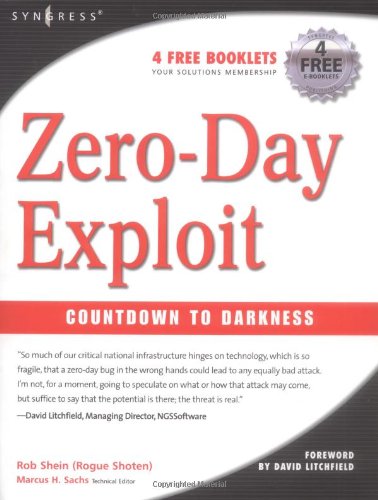- 2 402 202 книги
- Поиск
libcats.org











The Invisible Hook: The Hidden Economics of Pirates
Peter T. LeesonThis is a completely captivating account of the "great age of piracy" (1716-1726) and surrounding years, by an economist who loved pirates as a boy, has had an economics supply and demand diagram tattooed to his bicep since he was 17, and who proposes to his girl friend Ania in the dedication, declaring that if she turns him down, he will join the legion of pirates about whom he writes.
Leeson correctly notes that most historians do not know economics and hence cannot deal with important parts of the piracy phenomenon. Throughout the book he stresses that the supply of pirates is a function of the wage and level of demand for "legitimate" seamen, which is itself a function of the level of inter-country hostilities. He notes that the penchant of pirates for torturing their captives was limited to those who refused to divulge the whereabouts of the booty or who resisted capture. Torture was thus just a reputation-making device that lowered the cost of doing business for pirates. Leeson also stresses that pirates had much better working conditions than legitimate seamen, who were subject to the arbitrary and often cruel and bitterly selfish authority of the ship's captain.
In one important respect, Leeson is putting one over on the innocent reader. He suggests that the democratic structure of the pirate ship can be understood in terms of standard economic theory of the rational self-interested actor. A democratic ship was a preferred work environment for pirates, so they instituted political democracy (electing and recalling pirate captains) because they controlled the organization of production on the pirate ship. This may well be true, but this is hardly what we learn in standard economic theory. First, why would a rational self-interest pirate bother to attend meetings, listen to speeches, and vote for a captain? Assuming one vote cannot change the outcome of the election with more than infinitesimal probability, voting is an altruistic act, not a self-interested act.
Now of course perhaps it could be argued that pirate ships only have a maximum of 500 pirates, so the probabilities, costs, and benefits indicate that democratic participation is a self-regarding act of a rational pirate. But Leeson says nothing about this at all, leaving it to the unsophistication of the reader not to notice the problem.
Moreover, standard economic theory of the firm suggests that informational and agency issues lead to a set of owners virtually disjoint from the set of producers; i.e., since Alchian and Demsetz at least, firms have managers hired by owners, and managers hire and control workers. The idea of democratic worker control flowing from the standard theory is bizarre, to say the least. Leeson does address the principal-agent problem, saying "On the pirate ship, then, the principals were the agents." (p. 41) But this quite misleading. In the principal agent model there is a single principal, not a group of principals. The model does not work at all unless the principals, supposing they are a plurality, can somehow be aggregated into a single decision-maker. Moreover, the fact that the principals are the agents in no way solves the principal-agent problem---each agent still has an incentive to shirk, indeed almost as great an incentive as when there is a single, separate, owner of the ship serving as agent.
I conclude that there is still a lot more to be said about the organization of piracy than is touched on in this book. But Leeson has given us an exciting start.
Leeson correctly notes that most historians do not know economics and hence cannot deal with important parts of the piracy phenomenon. Throughout the book he stresses that the supply of pirates is a function of the wage and level of demand for "legitimate" seamen, which is itself a function of the level of inter-country hostilities. He notes that the penchant of pirates for torturing their captives was limited to those who refused to divulge the whereabouts of the booty or who resisted capture. Torture was thus just a reputation-making device that lowered the cost of doing business for pirates. Leeson also stresses that pirates had much better working conditions than legitimate seamen, who were subject to the arbitrary and often cruel and bitterly selfish authority of the ship's captain.
In one important respect, Leeson is putting one over on the innocent reader. He suggests that the democratic structure of the pirate ship can be understood in terms of standard economic theory of the rational self-interested actor. A democratic ship was a preferred work environment for pirates, so they instituted political democracy (electing and recalling pirate captains) because they controlled the organization of production on the pirate ship. This may well be true, but this is hardly what we learn in standard economic theory. First, why would a rational self-interest pirate bother to attend meetings, listen to speeches, and vote for a captain? Assuming one vote cannot change the outcome of the election with more than infinitesimal probability, voting is an altruistic act, not a self-interested act.
Now of course perhaps it could be argued that pirate ships only have a maximum of 500 pirates, so the probabilities, costs, and benefits indicate that democratic participation is a self-regarding act of a rational pirate. But Leeson says nothing about this at all, leaving it to the unsophistication of the reader not to notice the problem.
Moreover, standard economic theory of the firm suggests that informational and agency issues lead to a set of owners virtually disjoint from the set of producers; i.e., since Alchian and Demsetz at least, firms have managers hired by owners, and managers hire and control workers. The idea of democratic worker control flowing from the standard theory is bizarre, to say the least. Leeson does address the principal-agent problem, saying "On the pirate ship, then, the principals were the agents." (p. 41) But this quite misleading. In the principal agent model there is a single principal, not a group of principals. The model does not work at all unless the principals, supposing they are a plurality, can somehow be aggregated into a single decision-maker. Moreover, the fact that the principals are the agents in no way solves the principal-agent problem---each agent still has an incentive to shirk, indeed almost as great an incentive as when there is a single, separate, owner of the ship serving as agent.
I conclude that there is still a lot more to be said about the organization of piracy than is touched on in this book. But Leeson has given us an exciting start.
EPUB | FB2 | MOBI | TXT | RTF
* Конвертация файла может нарушить форматирование оригинала. По-возможности скачивайте файл в оригинальном формате.
Популярные книги за неделю:

Проектирование и строительство. Дом, квартира, сад
Автор: Петер Нойферт, Автор: Людвиг Нефф
Размер книги: 20.83 Mb

Система упражнений по развитию способностей человека (Практическое пособие)
Автор: Петров Аркадий НаумовичКатегория: Путь к себе
Размер книги: 818 Kb

Сотворение мира (3-х томник)
Автор: Петров Аркадий НаумовичКатегория: Путь к себе
Размер книги: 817 Kb

Радиолюбительские схемы на ИС типа 555
Автор: Трейстер Р.Категория: Электротехника и связь
Размер книги: 13.64 Mb

Момент истины (В августе сорок четвертого...)
Автор: Богомолов Владимир ОсиповичКатегория: О войне
Размер книги: 1.83 Mb
Только что пользователи скачали эти книги:

Всё Что Есть Испытаем На Свете
Автор: Отян АнатолийКатегория: Биографии и Мемуары
Размер книги: 281 Kb

Zero-Day Exploit
Автор: Rob Shein, Автор: David Litchfield, Автор: Marcus SachsКатегория: Компьютерная литература, Syngress
Размер книги: 9.65 Mb

Маша и Медведь
Автор: Аквариум, Автор: Гребенщиков БорисКатегория: Песенники и тосты
Размер книги: 1 Kb

A Path Toward Gender Equality: State Feminism in Japan (East Asia (New York, N.Y.). : History, Politics, Sociology, Culture)
Автор: Yoshie KobayashiКатегория: История
Размер книги: 1.89 Mb

2006-2011 World Outlook for Automotive Products
Автор: Icon Group International, Автор: Inc. Staff
Размер книги: 1.94 Mb

Fetichismo Lo Simbolico Lo Imaginario Y Lo Real
Автор: Lacan JacquesКатегория: fiction
Размер книги: 154 Kb


